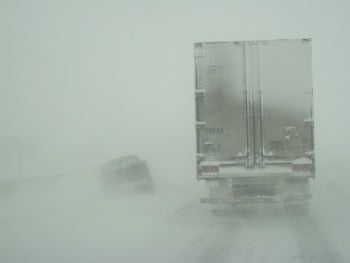 JENNIFER FREDRICK
JENNIFER FREDRICK
HNI Post Lost Administrator
In HNI's part of the world (the upper Midwest of the U.S.), it's getting into winter. This means fewer hours of daylight and snowy weather — circumstances that can make driving during these months treacherous. Let's say the roads are icy, and you were just involved in a side-swipe accident in your personal vehicle. The scene may be chaotic. You may be confronted by an angry or injured driver. What should you do? Do you know what information is important to gather?
Read on to discover the critical steps to follow in the event of an accident and what information you should possess before you leave the scene.
So You Had An Accident: The Next Steps
- BE CALM: Secure the accident scene with flashers or flares. Do whatever is necessary to protect your passengers and your property.
- CALL A DOCTOR: Check for injuries and call for medical help if necessary.
- STAY PUT: Do not leave the scene.
- KEEP MUM: Do not admit responsibility at the accident scene or blame anyone else; only discuss the accident with the police. And do not discuss the scope of your insurance coverage.
- CALL THE COPS: Always notify law enforcement if there are injuries, death, or significant property damage related to the accident. Make sure to cooperate with law enforcement officials.
- REPORT FAST: Report all losses to your insurance carrier immediately.
Information: The Facts You Should Collect
- Accident information: Write down the date, time of day, and location of the accident. Record details such as cross streets, lane configurations, and weather conditions.
- Other driver’s information: You should get his or her name, address, and telephone number. Get the other driver’s insurance company information: insurance company name, policy number, and phone number.
- Witnesses: Record name, address, and phone numbers of any witnesses; a witness is someone that saw the accident but was not involved in it.
- Pictures: Take pictures of the scene and of the damages sustained. Pictures should be taken from all angles.
- Accident description: You will want to briefly describe how the accident occurred, the vehicle speeds, weather and road conditions, and the nature of the damages to your car and the other driver’s car.
- Police report: Write down the name of the officer at the scene. Ask for the police report number and how to obtain a copy of the accident report.
Remember to always report an accident to your insurance carrier immediately to avoid putting your claim investigation in jeopardy. The accident information you gather is very helpful to your claim adjuster; it will help your claim adjuster start the investigation without delay!
With hope, you'll never need to apply these post-accident tips. But even the safest winter drivers can (literally!) run into problems! Be safe out there.
Related Posts:
10 Reasons Why the Collision Damage Waiver is a Must Have
Work Comp: When Are Commuting Employees Covered?
Safety Habit Could Change Industry... and Your Life
Social Media Turns Claims Investigation on its Head
.png?width=69&height=53&name=Acrisure%20Logo%20(White%20Horizontal).png)


